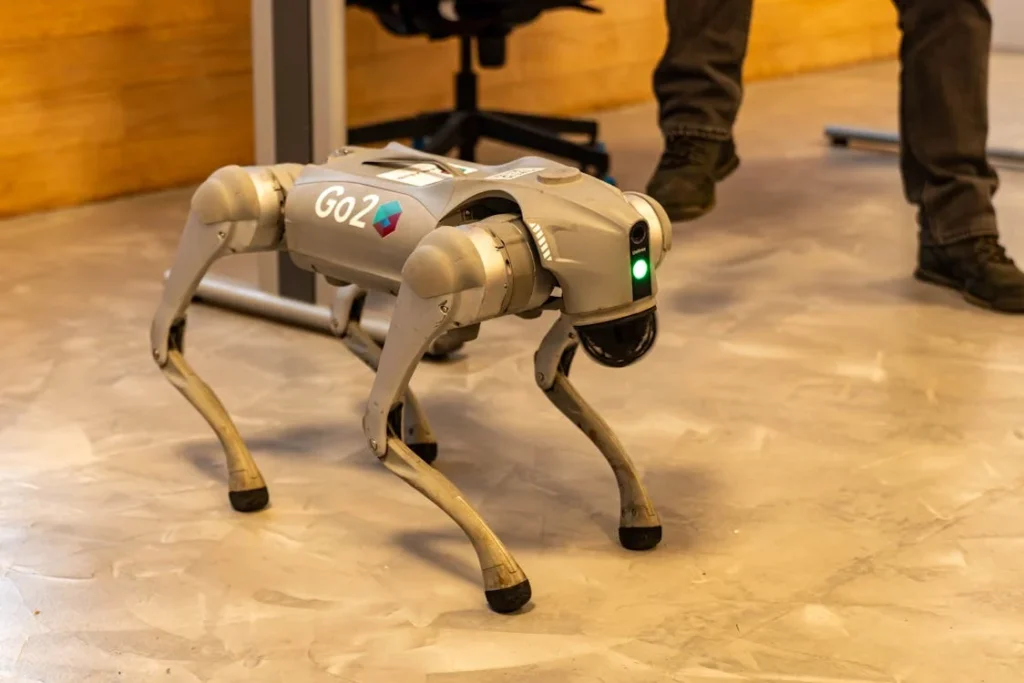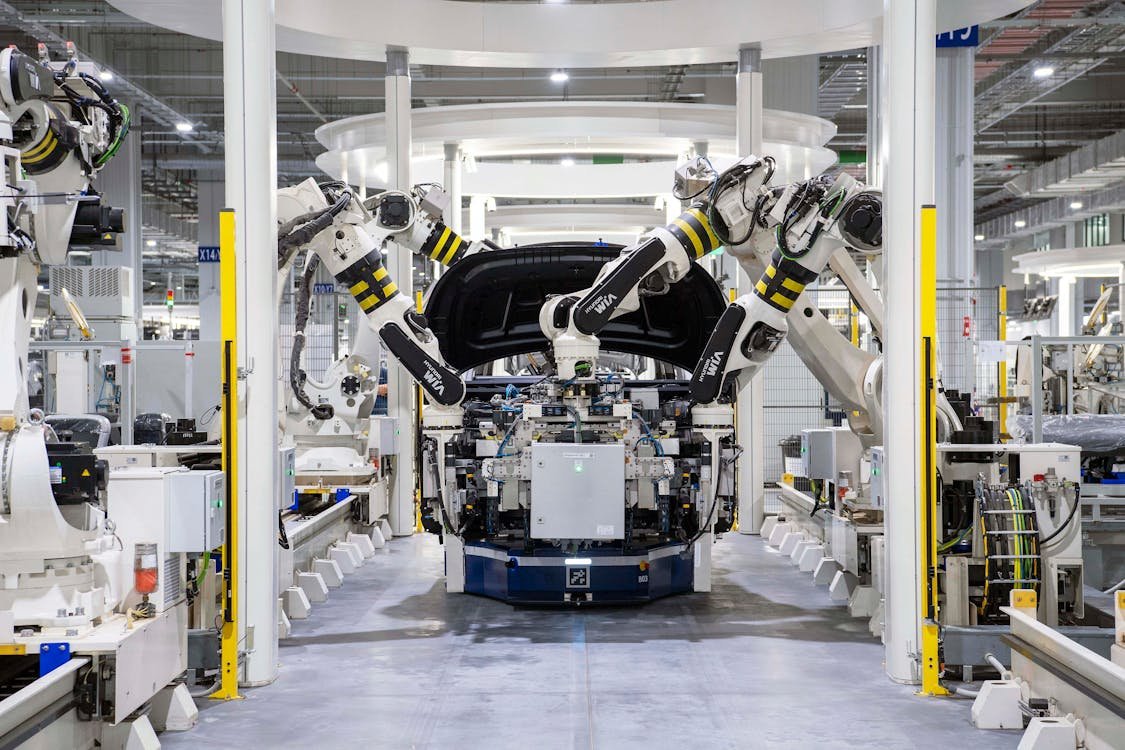Introduction: The Role of Robotics and Automation in Welding
Welding, a cornerstone of manufacturing and construction, has evolved significantly over the years. Traditionally, welding required skilled human labor to join metal parts, a process that demands precision, safety, and expertise. However, with advancements in technology, robotics and automation are now transforming the welding industry.
Robotic welding systems and automated processes are becoming essential for improving efficiency, consistency, and safety in production environments. This article will explore the integration of robotics and automation in welding, their benefits, applications, and the future outlook of this revolutionary change.
What is Robotic Welding?
Robotic welding refers to the use of robotic arms or automated machines equipped with welding tools to perform welding tasks without human intervention. These robots are controlled by computers, which direct the movement, speed, and heat applied during the welding process. Typically, robotic welding systems use arc welding (MIG, TIG, or Stick) or resistance welding techniques.
Key Components of Robotic Welding Systems:
- Robot Arm: A programmable mechanical arm that can move in multiple axes to position the welding tool accurately.
- Controller: The computer system that directs the robot’s movements, welding parameters, and operations.
- Welding Torch or Electrode Holder: The tool that delivers heat and filler material to the workpieces.
- Vision Systems: Cameras and sensors that enable the robot to detect the location and orientation of workpieces, ensuring precise weld placement.
The Benefits of Robotics and Automation in Welding
The integration of robotics and automation into welding offers numerous advantages for manufacturers and welders alike. Here are some of the key benefits:
1. Increased Efficiency and Productivity
Robots can work tirelessly, performing welding tasks faster and more consistently than humans. By automating repetitive or high-volume welding processes, manufacturers can significantly reduce cycle times, increase throughput, and meet tighter production deadlines. Robots can weld 24/7, leading to a substantial increase in overall productivity.
2. Improved Weld Quality and Consistency
Welding robots follow programmed instructions with precision, ensuring each weld is consistent in size, shape, and quality. This eliminates human error, such as variations in technique or heat application, resulting in fewer defects and stronger, more reliable welds. Robots also maintain a steady arc length and welding speed, leading to uniform results across all parts.
3. Enhanced Safety
Welding involves hazardous conditions, including high temperatures, intense ultraviolet radiation, and toxic fumes. By automating the welding process, robots can take over dangerous tasks, keeping human workers away from these risks. This leads to fewer workplace injuries, improving overall safety in manufacturing environments.
4. Cost-Effective in the Long Term
While the initial investment in robotic welding systems can be significant, the long-term cost savings are substantial. Robots can help reduce labor costs, minimize material waste, and decrease downtime. Additionally, the consistent quality of robotic welds reduces the need for rework, saving time and money.
5. Flexibility and Adaptability
Modern robotic systems are highly adaptable, allowing manufacturers to easily switch between different welding tasks. With advanced programming, robots can be reprogrammed to weld a variety of parts, from small components to large structures, and handle different materials, such as steel, aluminum, and stainless steel. This makes robotic welding ideal for diverse industries.
Types of Robotic Welding Systems
There are various robotic welding systems available, each suited for different types of tasks. Here’s a look at some of the most common systems used in the welding industry:
1. Articulated Robots
Articulated robots are the most commonly used robotic arms in welding applications. These robots have multiple joints (usually 6 or more) that give them a high degree of flexibility and range of motion. They are ideal for welding complex and intricate parts, as they can move in all directions with precision.
2. Cartesian Robots (Linear Robots)
Cartesian robots are simpler in design, with three linear axes of motion (X, Y, and Z). They are ideal for welding applications that require straight-line movement, such as welding large, flat panels. These robots are often used in high-volume production for repetitive welding tasks.
3. SCARA Robots
SCARA (Selective Compliance Assembly Robot Arm) robots are used for applications that require precise, horizontal movement. They are often used in situations where fast, efficient welding of components like automotive parts or small assemblies is needed.
4. Collaborative Robots (Cobots)
Cobots are designed to work alongside humans in a shared workspace. They are equipped with safety sensors to prevent injury and are ideal for environments where human workers and robots must work together in close proximity. Cobots are a great option for small-scale manufacturing or in settings where flexibility is key.
5. Laser Welding Robots
Laser welding robots utilize a laser beam to melt and fuse materials. These systems offer extremely high precision and are typically used for applications requiring high-quality joints, such as in the aerospace, automotive, and medical device industries. While more expensive, laser welding systems are highly effective for fine welding tasks.

Applications of Robotic Welding
Robotic welding is used across a wide range of industries where high-quality, precision welds are essential. Below are some of the most common applications:
1. Automotive Manufacturing
The automotive industry has been one of the earliest adopters of robotic welding technology. Robots are used extensively for welding car bodies, frame components, exhaust systems, and other parts. They ensure consistent weld quality and allow for high-volume production with minimal downtime.
2. Aerospace
In the aerospace industry, robotic welding is used to assemble lightweight and high-strength materials, such as titanium and aluminum alloys. Robots provide the precision necessary to meet strict aerospace standards while reducing the risk of defects in critical components.
3. Shipbuilding
In shipbuilding, robotic welding is employed to weld large sections of hulls, decks, and other structural components. Robots are especially useful in shipyards for performing high-precision welds in hard-to-reach areas or where the risk of human injury is high.
4. Construction and Heavy Equipment
Robotic welding systems are used in the manufacturing of heavy machinery, such as construction equipment, cranes, and mining vehicles. These robots improve production rates while ensuring that structural components are welded with maximum strength and durability.
5. Medical Device Manufacturing
Robotic welding has also made its way into the medical industry, where precision is paramount. Robots are used to weld components for medical devices such as surgical instruments, implants, and diagnostic equipment, ensuring tight tolerances and high-quality welds.
Future Trends in Robotic Welding and Automation
The future of robotic welding looks promising as technology continues to advance. Here are some emerging trends in the field:
1. Artificial Intelligence (AI) Integration
AI is beginning to play a more prominent role in robotic welding systems. AI-enabled robots can analyze data from sensors, cameras, and weld meters to optimize welding parameters in real-time. This results in better weld quality, faster production times, and more efficient operation.
2. 4D Printing and Additive Manufacturing
Robots are now being used in combination with 3D printing and additive manufacturing technologies to create complex parts with precise welds. The integration of additive and subtractive processes, like welding, could revolutionize manufacturing by offering even more customization and efficiency.
3. Advanced Vision Systems
As vision technology improves, robots will become even more capable of performing complex welding tasks with greater accuracy. Enhanced vision systems can help robots “see” the parts they are working on, allowing for adjustments in real-time based on variations in material or shape.
4. Increased Collaborative Robot Use
The use of collaborative robots (cobots) will continue to rise, especially in smaller manufacturing settings. These robots can work alongside human welders to handle repetitive tasks, allowing workers to focus on more complex operations. Cobots are expected to be a key player in the future of welding automation.
Conclusion
Robotics and automation are reshaping the welding industry, offering manufacturers the opportunity to enhance productivity, improve weld quality, and ensure greater safety in the workplace. With the ongoing advancements in robotic technology, the future of welding looks bright, promising even greater precision, flexibility, and efficiency.
Whether in automotive, aerospace, shipbuilding, or any other industry, the adoption of robotic welding systems is no longer just a trend but a necessity for staying competitive. As robots become more intelligent and capable, the potential for robotic welding to drive innovation and efficiency across industries will continue to grow.
